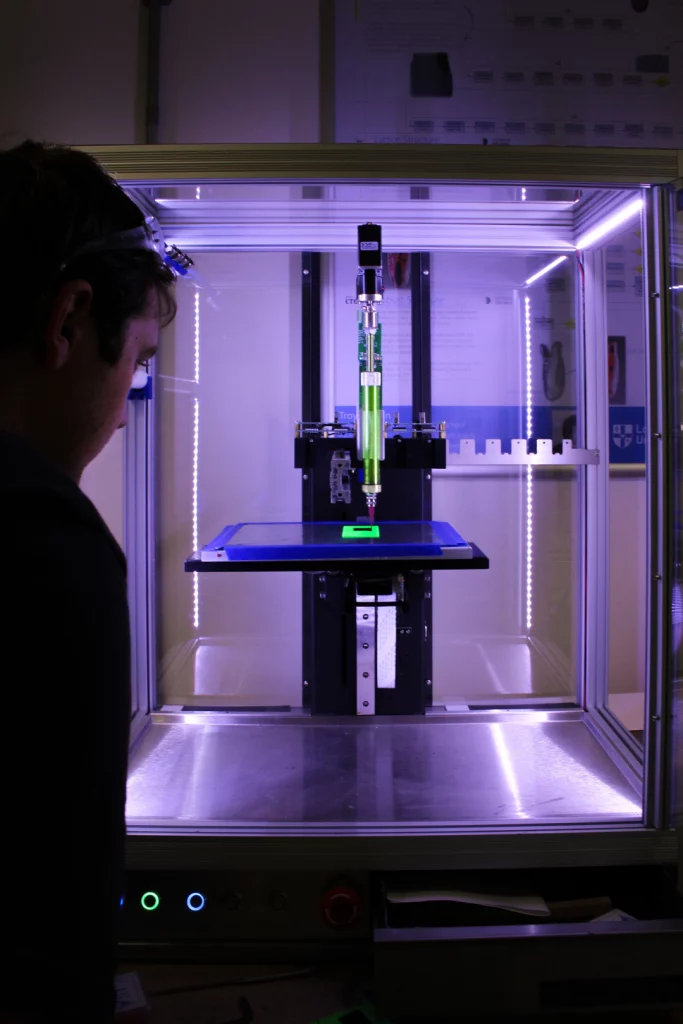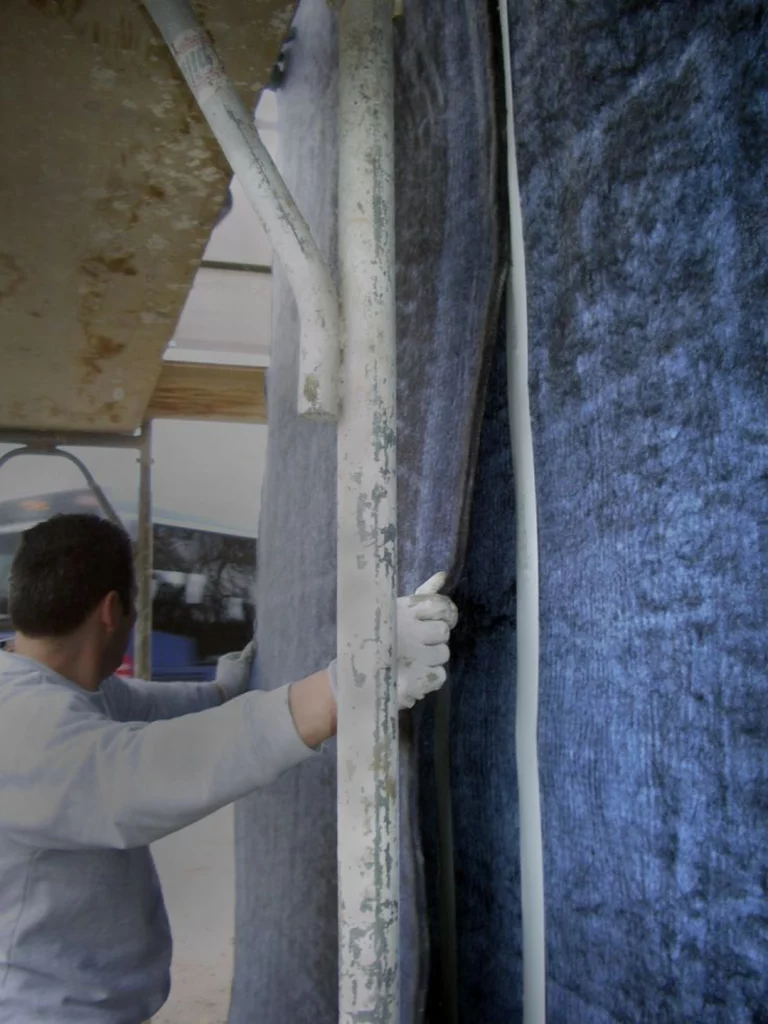REVOLUTIONIZING BUILDING MATERIALS: THE FUTURE OF CONSTRUCTION WITH SELF-HEALING CONCRETE, AEROGELS, AND NANOMATERIALS
The architectural landscape is evolving at an unprecedented pace, driven by a wave of innovation in building materials. Traditional construction materials like concrete, steel, and wood have served us well for generations, but the demands of the 21st century require something more. Enter the era of self-healing concrete, aerogels, and nanomaterials – a trio of groundbreaking innovations poised to transform the way we design, build, and inhabit structures.
In this blog, we embark on a journey through the exciting realm of advanced building materials. We’ll explore how self-healing concrete can mend its own cracks, how aerogels, among the lightest substances on Earth, can redefine insulation, and how nanomaterials are enabling buildings to be stronger, smarter, and more sustainable than ever before.
The quest for better building materials isn’t just about innovation for the sake of it; it’s a response to the challenges of our time. As populations swell and urbanization accelerates, our cities need to be more resilient, energy-efficient, and environmentally responsible. These new materials hold the promise of enhancing structural integrity, boosting insulation capabilities, and reducing our carbon footprint, all while pushing the boundaries of architectural design.
In the pages that follow, we will delve into each of these transformative materials, exploring their inner workings, practical applications, and the potential they hold for shaping a more sustainable future. From self-healing concrete that can mend itself to aerogels that insulate like never before and nanomaterials that empower architects to dream bigger, our journey through the world of advanced building materials promises to be enlightening and inspiring.
So, fasten your seatbelt and prepare to embark on a captivating voyage into the future of construction, where strength, insulation, and other properties of buildings are undergoing a remarkable revolution thanks to self-healing concrete, aerogels, and nanomaterials.
.

Self-Healing Concrete

Concrete, the cornerstone of modern construction, is known for its durability and strength. However, it’s not immune to wear and tear. Over time, concrete structures can develop cracks due to various factors, such as shrinkage, weathering, or heavy loads. Repairing these cracks can be costly, time-consuming, and disruptive. But what if concrete could heal itself?
What Is Self-Healing Concrete?
Self-healing concrete is a groundbreaking material that possesses the remarkable ability to repair its own cracks autonomously. It achieves this feat through the incorporation of various ingenious mechanisms, the most common of which involves the use of microorganisms, encapsulated healing agents, or shape-memory materials.
Microorganisms: Certain bacteria, such as Bacillus spores, are embedded within the concrete mixture. When cracks form, these microorganisms become active and produce calcium carbonate, a natural mineral that fills the cracks and restores the concrete’s structural integrity.
Encapsulated Healing Agents: Tiny capsules filled with a healing agent, such as epoxy or urethane, are distributed throughout the concrete. When a crack forms, these capsules rupture, releasing the healing agent, which then fills the gap, effectively sealing the crack.
Shape-Memory Materials: Self-healing concrete can also employ shape-memory polymers that can “remember” their original shape. When a crack occurs, the heat generated by the crack triggers the shape-memory polymer to revert to its original form, closing the crack in the process.
How Does Self-Healing Concrete Work?
The self-healing process typically kicks in when cracks reach a certain width, which is predetermined during the material’s development. Depending on the mechanism used, it can take a few hours to several days for the healing process to complete. This not only restores the structural integrity of the concrete but also prevents further damage, extending the lifespan of the structure.
Applications and Benefits
Self-healing concrete has a wide range of applications in the construction industry:
Infrastructure: It can be used in bridges, tunnels, and roads to extend their lifespan and reduce maintenance costs.
Buildings: Self-healing concrete can enhance the durability of residential and commercial structures, reducing the need for frequent repairs.
Sustainability: By increasing the longevity of concrete structures, self-healing concrete contributes to sustainability efforts by reducing the consumption of materials and energy required for repairs.
Safety: It improves safety by preventing the development of structural weaknesses and potential hazards.
Environmental Impact
While self-healing concrete offers numerous advantages, it’s essential to consider its environmental impact. The production of self-healing concrete may require the use of additional resources, and the encapsulated healing agents can be chemically complex. Therefore, researchers are working on optimizing the environmental footprint of self-healing concrete to ensure it aligns with sustainability goals.
Challenges and Limitations
Self-healing concrete represents a significant leap forward in construction materials, but it’s not without challenges:
Cost: Self-healing concrete can be more expensive than traditional concrete due to the added materials and technology.
Complexity: The production and implementation of self-healing concrete can be more complex, requiring careful engineering and quality control.
Maintenance: While self-healing concrete reduces the need for repairs, it still requires regular maintenance and monitoring to ensure its effectiveness.
Aerogels: Ultralight and Super Insulating

In the quest for more energy-efficient and sustainable buildings, one of the most promising materials to emerge is aerogels. These ultralight and super insulating materials have the potential to revolutionize the way we design and construct structures, providing unmatched thermal performance while reducing energy consumption.
Understanding Aerogels
Aerogels are a unique class of materials known for their extraordinary properties:
Ultralight: Aerogels are composed of a gel structure with a substantial portion of the liquid replaced by gas. This results in an incredibly low density, making them some of the lightest solids on Earth. They are often referred to as “frozen smoke” due to their translucent appearance and extremely low weight.
Superior Insulation: Despite their low density, aerogels possess exceptional insulating properties. They have very low thermal conductivity, meaning they are highly effective at preventing heat transfer. This makes them ideal for insulation applications.
Low Density: The low density of aerogels not only makes them lightweight but also reduces the overall weight of structures when used as insulation, contributing to energy efficiency and sustainability.
Remarkable Insulation Properties
The thermal conductivity of aerogels is a fraction of that of traditional insulation materials like fiberglass or foam. This means that buildings insulated with aerogels can maintain a more stable and comfortable indoor temperature while reducing the need for heating or cooling. This property is especially valuable in extreme climates where temperature regulation is crucial.
Applications in Building Design
Aerogels have a wide range of applications in building design and construction:
Insulation: Aerogels are used as insulation materials in walls, roofs, and windows to enhance energy efficiency and reduce heating and cooling costs.
Daylighting: Transparent aerogels can be used in daylighting systems to diffuse and distribute natural light throughout a building, reducing the need for artificial lighting during the day.
Fire Protection: Aerogels are fire-resistant, making them suitable for fireproofing applications in buildings.
Soundproofing: They can also be used to reduce noise transmission in walls and ceilings.
Historical Preservation: Aerogels are employed to restore and protect delicate historical artifacts and documents, showcasing their versatility.
Sustainability and Energy Efficiency
The use of aerogels in building construction aligns with sustainability goals in several ways:
Energy Efficiency: Improved insulation with aerogels reduces the energy consumption of buildings, contributing to lower greenhouse gas emissions.
Durability: Aerogels are long-lasting and resistant to degradation, reducing the need for frequent replacements.
Lightweight: Their low density reduces transportation costs and environmental impact during construction.
Potential Drawbacks
While aerogels offer significant advantages, there are some challenges to consider:
Cost: Aerogels can be more expensive than traditional insulation materials, which can be a barrier to widespread adoption.
Fragility: Some aerogels are fragile and require careful handling during installation.
Moisture Sensitivity: Certain types of aerogels can be sensitive to moisture, which may limit their application in wet environments.
Nanomaterials in Construction
Nanomaterials, a revolutionary class of materials engineered at the nanoscale, are poised to reshape the construction industry. These tiny wonders, with their unique properties and versatility, are enabling the development of stronger, more durable, and sustainable buildings. In this section, we will delve into the world of nanomaterials and their diverse applications in construction.
Introduction to Nanomaterials
Nanomaterials are materials with at least one dimension on the nanometer scale, typically ranging from 1 to 100 nanometers. At this scale, materials exhibit unique properties and behaviors that differ from their bulk counterparts. They can be engineered to have specific characteristics, making them highly adaptable for various applications.
Enhancing Building Strength
Nanomaterials are contributing to the strength and resilience of buildings in multiple ways:
Reinforcing Concrete: Carbon nanotubes and graphene are incorporated into concrete to enhance its mechanical properties. This leads to concrete that is not only stronger but also more resistant to cracking and corrosion.
Improved Composites: Nanomaterials are used in composite materials, such as nanofiber-reinforced polymers, to create lightweight yet strong structural elements for construction.
Stronger Coatings: Nanoparticles are employed in coatings for steel and other building materials to increase their resistance to wear, corrosion, and environmental damage.
Improving Thermal Properties
Energy efficiency is a critical concern in modern construction, and nanomaterials are playing a pivotal role in this area:
Thermal Insulation: Nanoparticles, like aerogels, are used to create highly effective thermal insulation materials that can keep buildings warmer in winter and cooler in summer, reducing heating and cooling costs.
Smart Windows: Nanomaterials enable the development of smart windows that can adjust their transparency and thermal properties in response to external conditions, reducing the need for artificial heating and cooling.
Solar Panels: Nanomaterials, such as perovskite solar cells, are used in the construction of more efficient and cost-effective solar panels, helping buildings generate their own renewable energy.
Nanomaterials for Sustainable Architecture
Sustainability is a core focus in contemporary construction, and nanomaterials align with this goal:
Reducing Material Use: Nanomaterials can be used to reduce the amount of conventional building materials required, minimizing environmental impact.
Self-Cleaning Surfaces: Nanocoatings with self-cleaning properties help maintain building exteriors, reducing the need for maintenance and cleaning chemicals.
Water Purification: Nanomaterials are employed in water purification systems for buildings, ensuring a sustainable source of clean water.
Safety and Ethical Considerations
While nanomaterials offer tremendous benefits, it’s important to address safety and ethical concerns:
Health and Environmental Impact: The potential health and environmental impacts of nanomaterials require thorough assessment to ensure their safe use.
Regulations: The regulatory framework for nanomaterials in construction needs to evolve to accommodate these emerging technologies while ensuring public safety.
Case Studies
Let’s take a closer look at some real-world examples where self-healing concrete, aerogels, and nanomaterials have been employed to enhance the strength, insulation, and other properties of buildings.
Case Study 1: The Netherlands’ Self-Healing Concrete Bike Path
Location: The Netherlands
Application: Self-Healing Concrete
In a pioneering project, the Netherlands unveiled the world’s first self-healing concrete bike path in 2015. This 70-meter-long path is embedded with microbial agents that activate when cracks form, producing calcium carbonate to seal the gaps. The result is a bike path that repairs itself, reducing maintenance costs and prolonging its lifespan. This innovative use of self-healing concrete showcases its potential for sustainable infrastructure development.
Case Study 2: The Edge Building in Amsterdam
Location: Amsterdam, Netherlands
Application: Aerogels
The Edge building in Amsterdam, often dubbed the “greenest” building in the world, features cutting-edge sustainability features, including the use of aerogels. Transparent aerogel-filled window panes are used in the façade, allowing natural light to flood the interior while providing excellent thermal insulation. This not only reduces the need for artificial lighting but also enhances energy efficiency, making it a model for future environmentally friendly office spaces.
Case Study 3: The CN Tower Revitalization Project
Location: Toronto, Canada
Application: Nanomaterials
The CN Tower in Toronto, one of the world’s most iconic structures, underwent a revitalization project that included the use of nanomaterials to improve its structural integrity. Carbon nanotubes were incorporated into the tower’s concrete structure to enhance its strength and resistance to environmental factors, such as the extreme weather conditions in Toronto. This application of nanomaterials demonstrates their potential for preserving and fortifying historic landmarks.
Case Study 4: The Bullitt Center in Seattle
Location: Seattle, USA
Application: Sustainable Nanomaterials
The Bullitt Center in Seattle is a certified Living Building, known for its exceptional sustainability standards. It incorporates sustainable nanomaterials in various ways, such as nanocoatings on windows that repel dirt and rain, reducing the need for cleaning and maintenance. Additionally, the building features nanomaterial-based water filtration systems, ensuring a sustainable and clean water supply for its occupants. The Bullitt Center showcases how nanomaterials can contribute to both energy efficiency and environmental responsibility in construction.
Case Study 5: The Burj Khalifa
Location: Dubai, UAE
Application: Self-Healing Concrete
The Burj Khalifa, the world’s tallest skyscraper, exemplifies the use of self-healing concrete. While not visible to the eye, self-healing concrete has been used in the construction of this iconic building. The self-healing properties of the concrete help maintain the structural integrity of this colossal structure, ensuring its safety and longevity in the challenging desert environment.
These case studies illustrate the real-world applications of self-healing concrete, aerogels, and nanomaterials in the construction industry. From sustainable bike paths to futuristic office spaces and historic landmarks, these innovative materials are transforming the way we build, making structures more resilient, energy-efficient, and environmentally responsible. As research and development in this field continue, we can expect to witness even more remarkable applications of these materials in the buildings of the future.

Future Prospects and Challenges
As we venture into the future of construction with self-healing concrete, aerogels, and nanomaterials, it’s essential to consider the exciting prospects and the challenges that lie ahead. Here, we explore the potential disruptions, regulatory considerations, safety concerns, and collaborative research opportunities in this evolving landscape.
The Growing Role of Advanced Materials
Prospect 1: Enhanced Sustainability
The adoption of advanced materials like self-healing concrete, aerogels, and nanomaterials is expected to play a pivotal role in advancing sustainability goals. These materials can lead to reduced resource consumption, lower energy usage, and extended building lifespans, contributing to more environmentally responsible construction practices.
Prospect 2: Energy Efficiency
As energy efficiency becomes a top priority in construction, aerogels and nanomaterials, with their remarkable insulating properties, are poised to become standard components in building design. This will result in reduced heating and cooling costs, making structures more energy-efficient and cost-effective to operate.
Prospect 3: Innovative Architectural Designs
Advanced materials enable architects to push the boundaries of design, creating structures that were previously inconceivable. The use of self-healing concrete, aerogels, and nanomaterials can lead to more resilient and aesthetically pleasing buildings, inspiring new architectural possibilities.
Potential Disruptions in the Construction Industry
Challenge 1: Cost Considerations
One of the primary challenges is the cost associated with these advanced materials. While the long-term benefits in terms of reduced maintenance and energy savings are evident, initial costs can be higher. Overcoming this challenge involves finding ways to make these materials more cost-competitive and accessible.
Challenge 2: Regulatory Frameworks
Regulations governing the use of new materials need to evolve to ensure safety and compliance. Establishing standardized testing methods and safety protocols for self-healing concrete, aerogels, and nanomaterials is essential to gain widespread acceptance in the construction industry.
Challenge 3: Safety and Health Concerns
Nanomaterials, in particular, may raise safety and health concerns due to their small size and unique properties. Ensuring safe handling, disposal, and long-term environmental impact assessments are vital to mitigate potential risks.
Collaboration and Research Opportunities
Opportunity 1: Interdisciplinary Research
Collaboration between scientists, engineers, architects, and policymakers is essential to drive innovation in the development and application of these materials. Interdisciplinary research can help address technical challenges and optimize their use in construction.
Opportunity 2: Material Optimization
Continued research into material properties, production techniques, and sustainability aspects will lead to the optimization of self-healing concrete, aerogels, and nanomaterials. This includes finding eco-friendly production methods and recycling processes for these materials.
Opportunity 3: Education and Training
Training and education programs should be developed to ensure that construction professionals are well-versed in the use of advanced materials. This will facilitate their widespread adoption and effective implementation in construction projects.
In conclusion, the future of construction with self-healing concrete, aerogels, and nanomaterials is brimming with potential. These materials promise to revolutionize the industry by making buildings more sustainable, energy-efficient, and resilient. However, addressing cost concerns, navigating regulatory challenges, and ensuring safety are critical steps in realizing this vision. Through interdisciplinary collaboration and ongoing research, we can unlock the full potential of these advanced materials and create a future where buildings are not only structurally sound but also environmentally responsible and technologically advanced.


